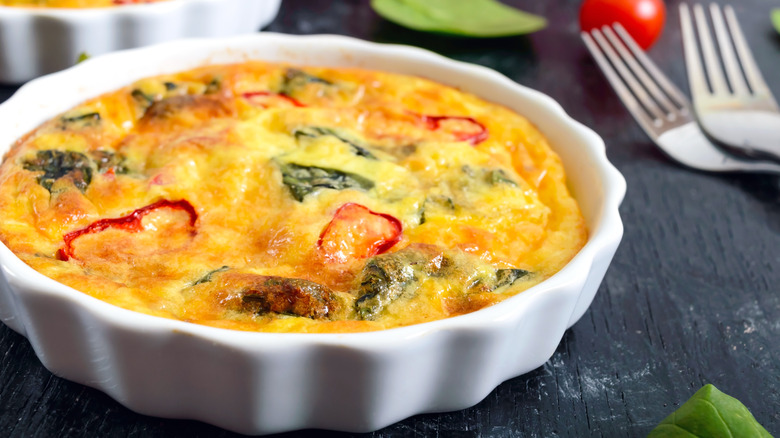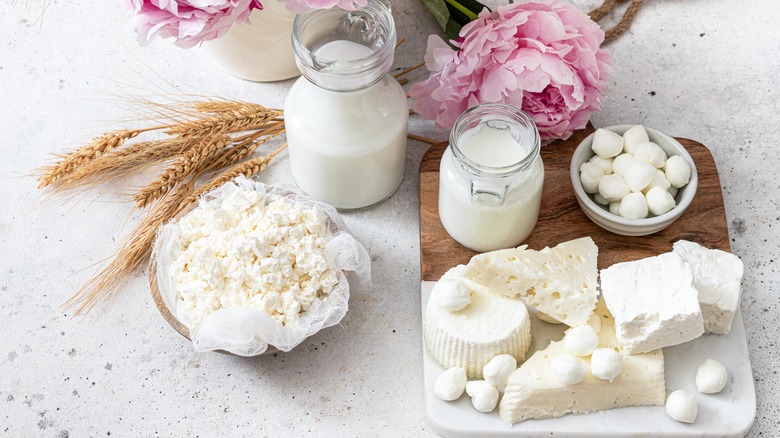Here's How To Choose The Right Cheese For Your Frittata
The ultimate frittata is one with a golden brown top that is as smooth as custard with tender meats or vegetables interspersed throughout the mixture. As particular as this requirement may sound, frittatas are easier to make than any old omelet or scrambled egg dish since they don't require any frying skills or difficult hand maneuvers. Though Italian in origin, the frittata depends heavily on the French mise en place technique of gathering your ingredients before starting the cooking process. This means that much of the effort comes with gathering and preparing the ingredients, rather than cooking the frittata itself. After all, it's just a mixture of eggs, milk, your vegetables of choice, and cheese.
Of course, everyone has their own preferences when it comes to their frittata — particularly in selecting the right cheese. In the same way that an omelet contains a pocket of melted cheese at its center, the frittata also banks on its creamy bites of cheese. The first thing you should understand is the role that each cheese plays in a dish. We know that Parmesan and Pecorino Romano, for example, are used to add salinity to a dish, but we would never use them for a pleasing cheese pull.
So what kind of cheese belongs in our baked egg pie?
Go for high moisture cheeses
Sure, you can have a favorite type of cheese, but the key to picking the perfect cheese for your frittata is selecting one with high moisture. According to Cheese Science, high moisture cheeses like mozzarella and smoked Gouda are great melting cheeses that give frittatas their desired texture. Meanwhile, a low moisture cheese like Parmesan won't melt in the oven, especially when it's surrounded by a mixture of eggs. Another thing to consider is the acidity of the cheese — take goat cheese or paneer. Adding highly-acidic goat cheese to a frittata may add a desired tang or flavor, but it won't provide a gooey cheese pull. If you don't care to add a stringy cheese pull to your frittata, goat cheese or even a pungent Roquefort can do wonders.
On the other end of the spectrum, low acid cheeses like bread cheese soften in the heat but hardly melt, so they'd leave chunks of chewy cheese in your frittata (via Cheese Science). Aside from the common contenders, you could also use the slices of American cheese you have in your fridge. They may not give you a better cheese pull than freshly grated cheese, but Cook's Illustrated notes that their sodium citrate content acts as an emulsifying agent that melts the cheese seamlessly. This is probably why American is the best cheese to make nacho cheese. The result is a fondue-like melt, which blends smoothly into the baked eggs.

